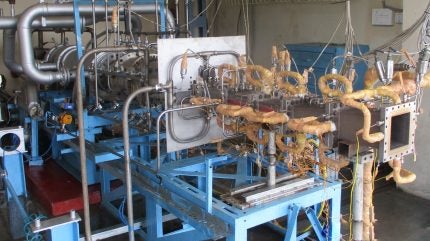
India-based Defence Research & Development Laboratory (DRDL) has achieved a significant milestone by conducting a successful ground test of an Active-Cooled Scramjet Combustor, marking a first in the country’s history.
The 120-second test forms part of the country’s efforts to develop a long-duration Supersonic Combustion Ramjet or Scramjet powered hypersonic technology. It is pivotal in the progression towards the creation of future hypersonic missile systems.
DRDL is a part of the Indian Ministry of Defence (MoD) arm, Defence Research and Development Organisation (DRDO).
Missiles that operate at hypersonic speeds exceed Mach 5, which translates to velocities to over 5,400km per hour. Such weapons are capable of evading current air defence mechanisms and can execute swift, impactful strikes.
Nations such as the US, Russia, India, and China are vigorously developing this technology, The MoD said.
Scramjets are crucial for hypersonic flight as these air-breathing engines maintain high-speed combustion without relying on mechanical components.
How well do you really know your competitors?
Access the most comprehensive Company Profiles on the market, powered by GlobalData. Save hours of research. Gain competitive edge.

Thank you!
Your download email will arrive shortly
Not ready to buy yet? Download a free sample
We are confident about the unique quality of our Company Profiles. However, we want you to make the most beneficial decision for your business, so we offer a free sample that you can download by submitting the below form
By GlobalDataThe scramjet combustor ground test demonstrated several critical capabilities necessary for future hypersonic vehicle deployment, including successful ignition and sustained combustion.
The combustor employs techniques for flame stabilisation that allow it to maintain continuous combustion with airspeeds surpassing 1.5km per second.
Extensive ground testing and evaluation using advanced computational fFluid dynamics simulation tools were instrumental in finalising the scramjet engine configuration.
Indian Defence Minister Rajnath Singh said: “The achievement marks a crucial milestone in the development of next-generation hypersonic missiles.”
A notable advancement in this project is the indigenous development of endothermic scramjet fuel, a first for India, accomplished collaboratively by DRDL and industry partners.
This fuel offers improved cooling and easier ignition. A specialised manufacturing process was established to meet DRDL’s stringent fuel requirements on an industrial scale.
In addition, DRDL has developed an advanced Thermal Barrier Coating (TBC) in collaboration with the Department of Science and Technology Laboratory to protect against the extreme temperatures experienced during hypersonic flight.
This new ceramic-based TBC exhibits high thermal resistance and can withstand temperatures above the melting point of steel. Specialised deposition methods are used to apply this coating within the Scramjet engine, enhancing its performance and durability.
In November 2024, DRDO carried out a flight-trial of the country’s first long-range hypersonic missile from Dr APJ Abdul Kalam Island off the coast of Odisha.
The missile, which is designed for the Armed Forces, can carry various payloads over distances more than 1,500km.



